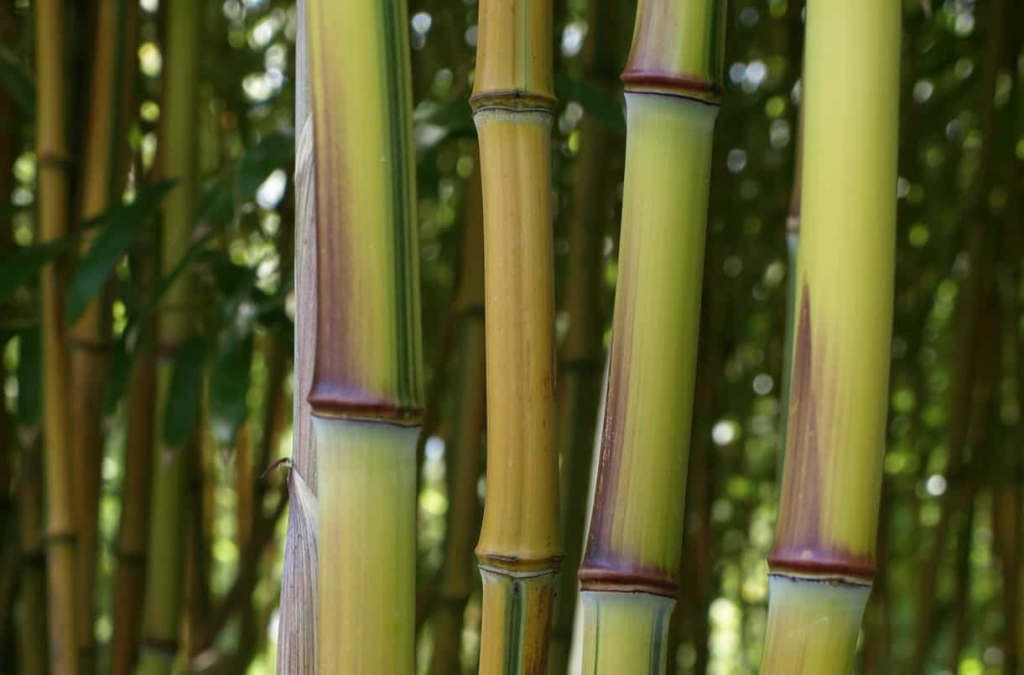
Bamboo may be your go-to plant if you want to add some greenery to your home. With its simple needs and versatile look, bamboo is an excellent choice for anyone who wants to add some life to their space.
Bamboo plants are known for their rapid growth. Some varieties can reach a height of four feet in a single day!
Bamboo is also unique in its ability to self-propagate. Bamboo plants produce new shoots that appear from the ground near the parent plant rather than seeds.
These new shoots quickly mature and start producing their own shoots, creating a dense network of bamboo plants.
How to Grow a Bamboo Plant?
Due to its rapid growth and ability to spread quickly, bamboo has been used for centuries to make everything from paper to furniture to musical instruments.
In this article, we will discuss choosing the most suitable type of bamboo for your space and how to grow and care for it.
- Choosing the Right Bamboo Plant
There are different varieties of bamboo plants, and choosing the right one can seem daunting.
However, you should consider a few important factors to make the best decision for your house or garden.
First of all, consider the climate in which you live. Some varieties of bamboo are better suited to warm weather, while others can tolerate colder temperatures.
Second, consider how much space you have. Bamboo can grow quite large, up to 100 feet in the wild, so make sure you have enough room for the plant to reach its full potential.
If you’re looking for an indoor plant, opt for a dwarf variety like the Buddha’s Belly bamboo plant. These plants stay relatively small (usually 3 feet or shorter), so they’re perfect for placing on a windowsill or in another small space.
Consider a larger indoor plant like Lucky Bamboo if you have more space. These plants can grow up to 6 feet tall and prefer humid conditions, so they’re best suited for bathrooms or kitchens.
Finally, consider the level of maintenance you are willing to do. Some types of bamboo require more regular watering and pruning than others.
- How to Grow Bamboo Plants
Bamboo plants are very easy to grow from cuttings or rhizomes (rootstalk). These may be available at your neighborhood nursery or garden center.
Once you have your cutting or rhizome, fill a pot with loose, well-draining soil and plant it about 2 inches below the surface of the soil. Water the plant well and place it in a bright, sunny location. Bamboo plants thrive in warm weather and struggle in conditions below 50 degrees Fahrenheit.
Once your bamboo plant has been established for a few months, you can begin to fertilize it every other month with a balanced fertilizer such as 10-10-10. Avoid overfertilizing your bamboo plant to avoid damaging the roots.
- Lighting Conditions for Bamboo Plants
When it comes to bamboo plants, the best lighting conditions depend on the type of bamboo you are growing. For example, most weeping bamboo varieties prefer partial shade, whereas species like Sasa veitchii and Fargesia robusta require full sun to thrive.
The majority of bamboo plants, however, prefer direct, bright light. Direct sunlight can be too harsh for bamboo, causing the leaves to scorch or turn yellow.
Provide some afternoon shade to shield your plants from the sun’s harshest rays if you live in a region with sweltering summers. With proper care, your bamboo plants will thrive and add beauty and elegance to your home for many years.
- Watering Conditions for Bamboo Plants
Although bamboo is a resilient plant, it does require some care when watering. Bamboo plants need consistent moisture to thrive. Bamboo should be watered once or twice a week during the hot summer to prevent it from drying out.
In the winter, the frequency of watering can be reduced, but the soil should still be kept moist. Overwatering can also be detrimental to bamboo, so it is important to allow the soil to drain between watering sessions.
- Fertilizing Conditions for Bamboo Plants
The best time to fertilize bamboo is in the spring before the plant begins its active growth. During this time, the plant can absorb nutrients better, which helps promote healthy growth.
Using a fertilizer high in nitrogen is important, as it provides the plant with the energy it needs to put on new growth. However, an excess of nitrogen may burn the roots and turn the leaves yellow.
- Pruning Conditions for Bamboo Plants
Bamboo is fast-growing and can quickly become overgrown if not properly pruned. By understanding the ideal pruning conditions for bamboo, you can keep your plants healthy and prevent them from taking over your garden.
Bamboo plants should be pruned in early spring before new growth begins. The plant will have time to recover from the pruning before the growing season.
When pruning, be sure to get rid of any dead or broken branches and any crossing or rubbing against one another. This will help to promote airflow and prevent the spread of disease.

Conclusion
You have learned a lot about growing and caring for bamboo plants. Bamboo is an adaptable and simple-to-care-for houseplant that can clean the air in your house.
Choosing the right type of bamboo plant for your space is important; once you have a bamboo plant, be sure to give it regular watering and place it in an area with bright indirect light.
With a bit of care, your bamboo plant will thrive and fill your home with fresh air.
